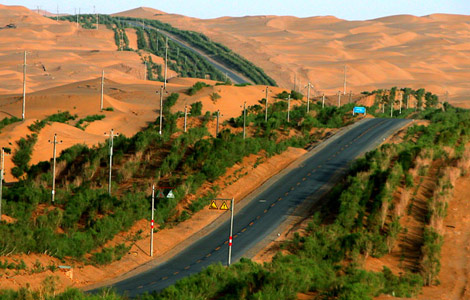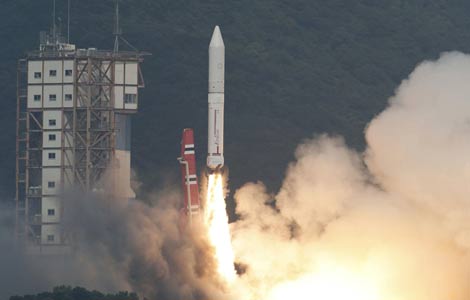Gala marks 60th anniversary of Aba prefecture
Updated: 2013-09-16 21:20
By Huang Zhiling and Lai Li (chinadaily.com.cn)
|
||||||||
Huaji Drolma was so excited about participating in the gala celebrating the 60th anniversary of the Aba Tibetan and Qiang autonomous prefecture in Sichuan province that she got up at 5:30 am on Monday.
“The gala started at 10 am, but together with four other classmates who were also performers I went to the site of the gala - the prefecture's ground track field which is within walking distance from the Sichuan Ma'erkang Nationality Teachers' School where we study - at 7:30 am,” said the 16-year-old Tibetan from Rangtang county in Aba.
Huaji Drolma is a first-year student at the Sichuan Ma'erkang Nationality Teachers' School in Ma'erkang, capital of Aba.
She was one of more than 5,0000 performers who participating in the gala.
“The performers are civil servants, folk artists, soldiers, farmers, herdsmen and students,” said Chen Yong, one of the organizers of the gala.
The gala featured Tibetan and Qiang songs and dances. Participants recited poems about the Long March and 2008 Wenchuan earthquake.
With 900,000 inhabitants, Aba, which covers 84,200 square kilometers, is Sichuan's second-largest habitat of the Tibetan people and China's main habitat of the Qiang people.
During the Long March, the Red Army of the Communist Party of China, the forerunner of the People's Liberation Army of China, climbed the snow mountain in Aba three times and crossed its grassland three times. The army stayed in Aba for 16 months.
Lasting from October 1934 to October 1935, the Long March was a military retreat undertaken by the army to evade the pursuit of the Kuomintang army and reach Ya'an in Northwest China's Shaanxi province from Ruijin in East China's Jiangxi province to set up its new revolutionary base.
During the army's stay in Aba en route to Shaanxi, locals in Aba offered it grain and killed their yaks, their main source of income, so that the army had food to climb the snow mountain and cross the grassland, Chairman Mao Zedong said.
According to the Ma'erkang Memorial Museum for the Long March of the Red Army, people in Ma'erkang alone donated 3 million kg of grain and countless yaks and horses to the Red Army.
The epicenter of the Wenchuan earthquake in 2008 which killed nearly 90,000 people is in Yingxiu, Wenchuan county in Aba.
“A total of 693,000 people in all of the 13 counties in Aba were affected, and direct economic losses amounted to 182.3 billion yuan ($29 billion),” said Yan Youhua, an information officer in the prefecture.
Thanks to aid from different parts of the country, the prefecture has completed its reconstruction and witnessed unprecedented improvements in its infrastructure and economic growth.
“Last year, its gross domestic product surpassed 20 billion yuan, up 13.7 percent over the previous year. Its urban residents' disposable income amounted to 21,168 yuan, 861 yuan more than the provincial average and a rise of 15 percent over the previous year. Its rural residents' per capita net income was 5,770 yuan, up 23.8 percent over the previous year,” Yan said.
Speaking before the gala on Monday morning, Wang Dongming, Party chief of Sichuan, said that Aba had a leap of one millennium from slavery to socialism in 1953 when it became a Tibetan and Qiang autonomous prefecture.
“Its GDP (which was only 24 million yuan in 1952) stands head and shoulders above many other ethnic autonomous prefectures in China,” he said.
Most Viewed
Editor's Picks

|

|

|

|

|

|
Today's Top News
Chinese FM to make US, UN trip
USDA's OK of chicken processing challenged
US top carpet maker sets up in China
States laud lifting of ban on hardwood by China
UN chief gets report on Syria chemical weapons
Succession proves a tricky art in business
Going global? Not so easy
Japan switches off nuclear reactor
US Weekly

|

|














